Danish Rye Bread (Rugbrød)
This post may contain affiliate links. See my disclosure policy.
This authentic Danish rye bread recipe (rugbrod) is easier to make than you may think. It’s packed with nutrients, has a fantastic texture and old-fashioned flavor and is just plain delicious! Whether you prefer a bolder or milder flavor, you’re completely in charge of that in determining how long you allow the batter to ferment.
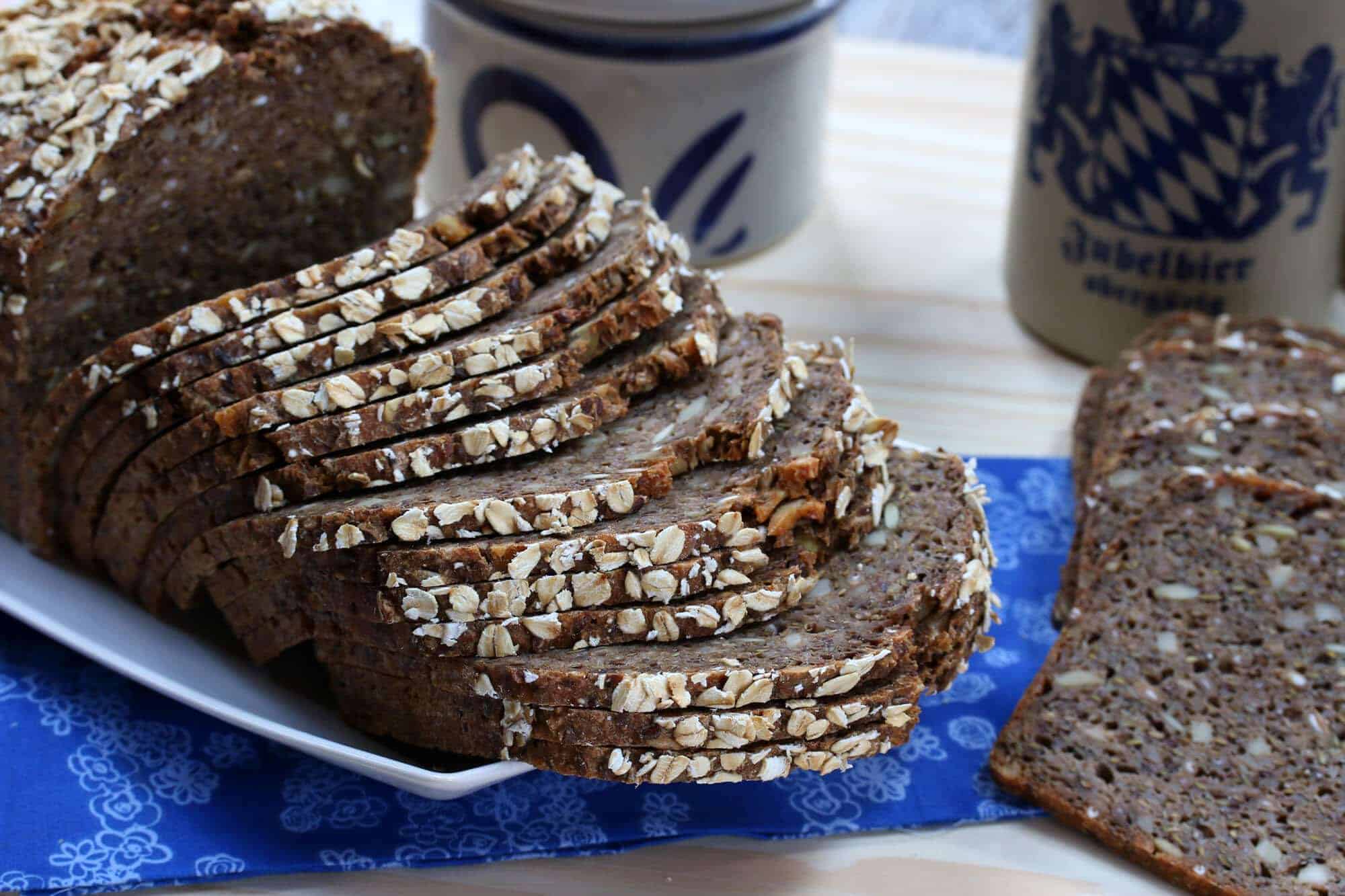
I love breads of all kinds, but there are two kinds that I especially love: Ones that are perfectly crispy on the outside and fluffy on the inside (eg, baguettes) and whole grain breads that are very dense and hearty like the kind I grew up with in Germany (eg, Vollkornbrot, Roggenbrot, Schwarzbrot, etc) and this Danish rye bread.
Smorrebrod
In Germany and throughout Scandinavia dense whole grain breads are particularly popular. You’ll see them served cut up in squares for a variety of hors d’oeuvres (for example, topped with gravlax/smoked salmon, a dollop of crème fraîche or hard-boiled eggs and a sprig of dill), served for breakfast with a tray of sliced cheeses and cold cuts, enjoyed for open-faced sandwiches or simply slathered down with good butter and jam.
In Denmark this rye bread (rugbrød) serves as the basis for their smørrebrød (ie, smorgasbord) wherein it is served buffet style with any number of fine toppings and is also a common accompaniment for many meals. Traditional options include herring, pickled vegetables, liver pate, smoked salmon, and sliced hard-boiled eggs. This Danish Rye Bread recipe is just what you need to create your smorrebrod!
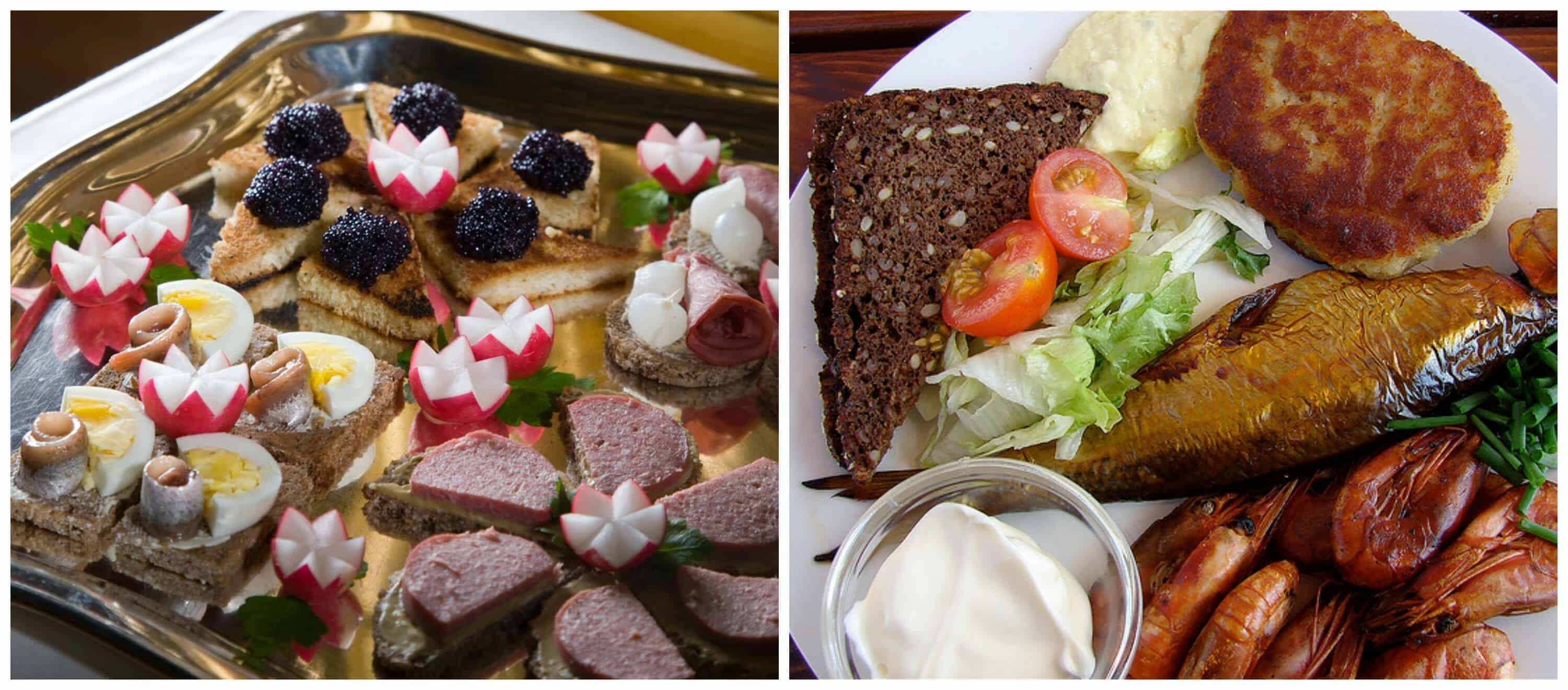
I’ve known many people who have visited Denmark or Germany, fell in love with this type of bread and returned home to their countries unable to find it there. I haven’t been able to find it anywhere here in the U.S. except for German specialty stores and World Market stocks a very small selection of dense German breads. Though specifically Danish sourdough rye bread I haven’t found anywhere here for purchase. The good news is you can make it yourself and I’m going to be posting several recipes for this wonderful style of dense, hearty European bread.
We’re going to start with a favorite among many, Danish Rye Bread. And while this bread is also popular in Germany, it claims particular importance in Denmark, indeed it’s practically one of its national foods, so we’re going to go ahead and ascribe this bread to the Danes. (Plus it will make the maternal side of my husband’s family happy, they’re fiercely proud of their Danish ancestry. And I have some Danish ancestry myself, so we’re all happy.)
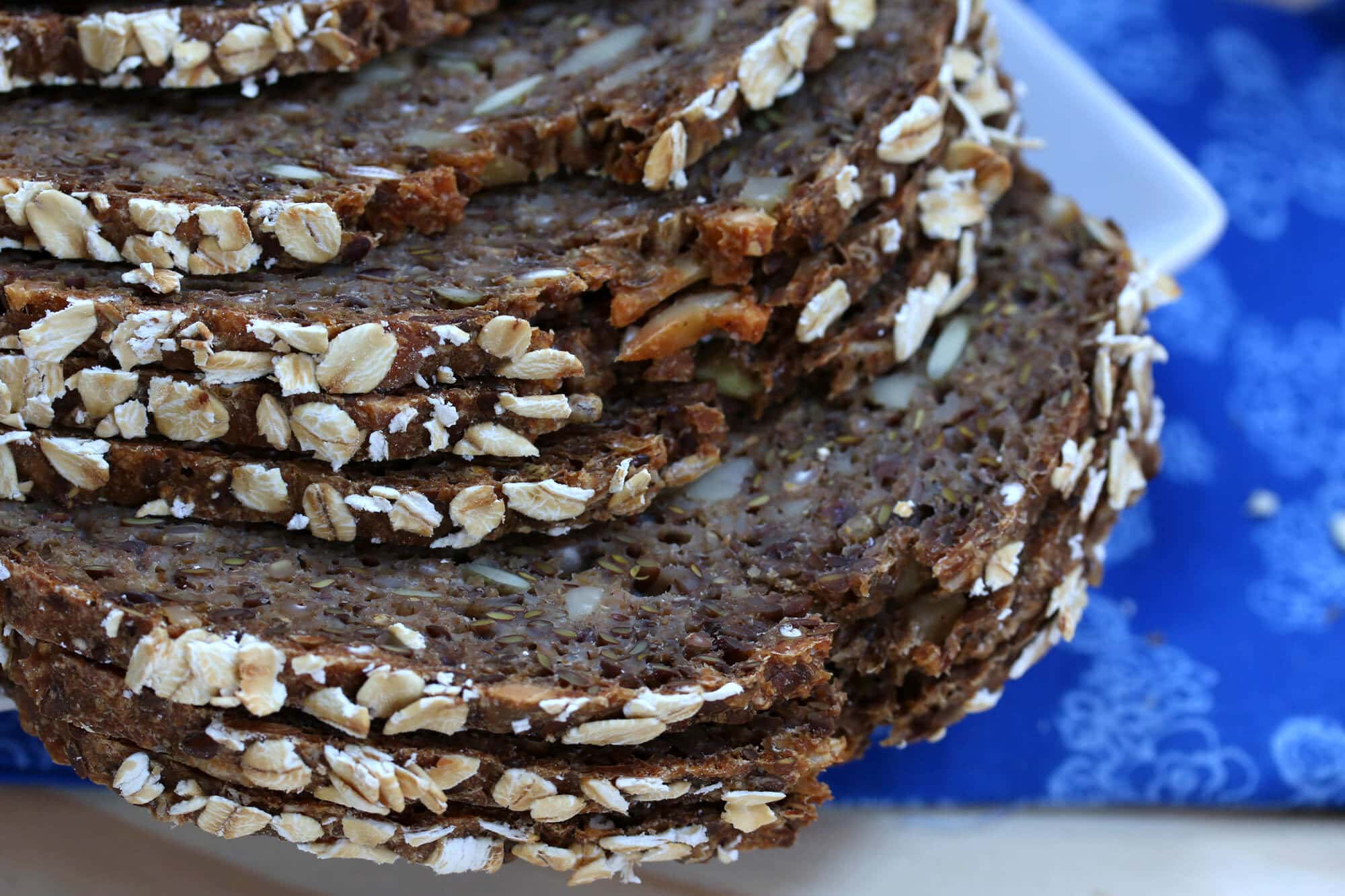
How to Make Danish Rye Bread
Danish rye bread is a sourdough bread that traditionally takes 2-3 days to make. Here is a super simple version that cuts the fermentation time down to as a little as 24 hours without the need to tend and feed it. This version calls for a yeasty beer. Beer and bread are cousins, both traditionally made from the same two ingredients, water and grains. The alcohol in this bread is burned off during the long baking process while the beer contributes to a fabulous texture and consistency (and flavor, depending on which beer you use).
The bread dough is allowed to ferment for 24 hours at room temperature (or 48 hours depending on how sour you like the bread). This fermentation process neutralizes the phytic acid in the grains, a naturally occurring substance that binds nutrients so that the body cannot properly absorb them. Not only does phytic acid acid bind the nutrients of the grains themselves, it binds the nutrients of anything else you eat with the grains. Fermenting the bread dough increases its nutrients and makes the bread easier to digest. And even after sourdough is baked it continues to sour and only gets better in flavor over time.
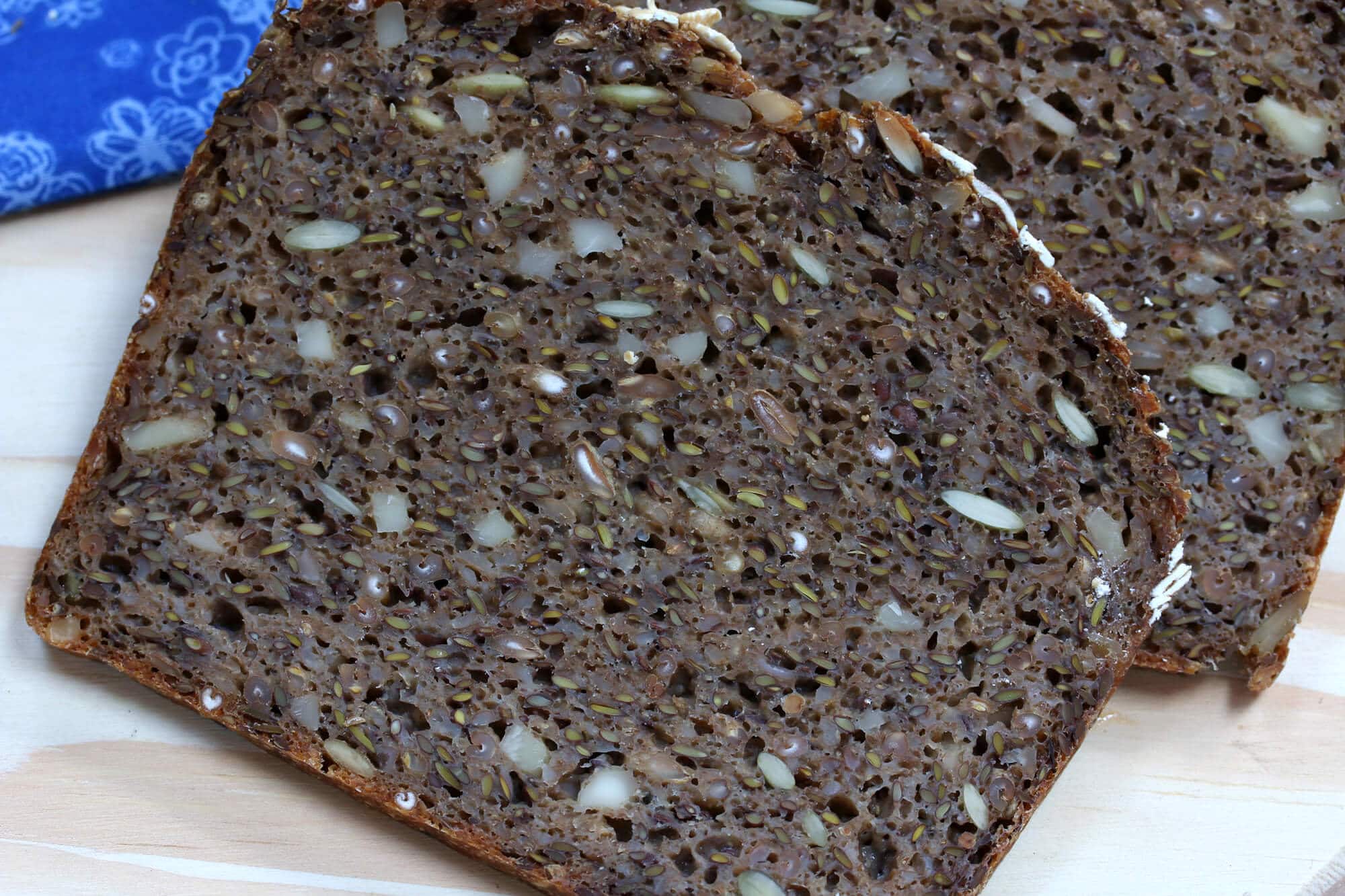
Danish Rye Bread Ingredients
This wonderfully nourishing bread is packed full of whole grains, seeds and nuts. The grains are included in the form of flour (rye and wheat), cracked rye berries and whole rye berries. Tons of similar styled breads incorporate these various forms of whole, cracked, coarsely ground and finely ground grains (eg, spelt, einkorn, wheat, kamut, etc) into the same loaf for a wonderful balance of textures, and that’s where a good grain mill really comes in handy. Not only can you grind your own fresh flour on demand with all the nutrients still intact (as opposed to flour that’s been sitting on grocery store shelves for ages), you can get exactly the kind of grind you need.
I buy my grains all in bulk, take out what I need to last me for a few weeks at a time and store the rest in a dark, cool place. I don’t even buy flour anymore, I grind all of my own flours, cornmeal and make my own baking mixes. For today’s Easy Danish Rye Bread I’m using my German-made KoMo Classic Grain Mill, another stellar example of German engineering and the pride and joy of my kitchen.
With a 12-year warranty, the quality and construction of the KoMo is amazing, plus it’s gorgeous and something you’d want to display on your counter. You can grind your grains as fine or coarse as you like. I use it nearly every day to make my own flours, cornmeal and mixes and cannot recommend it highly enough.
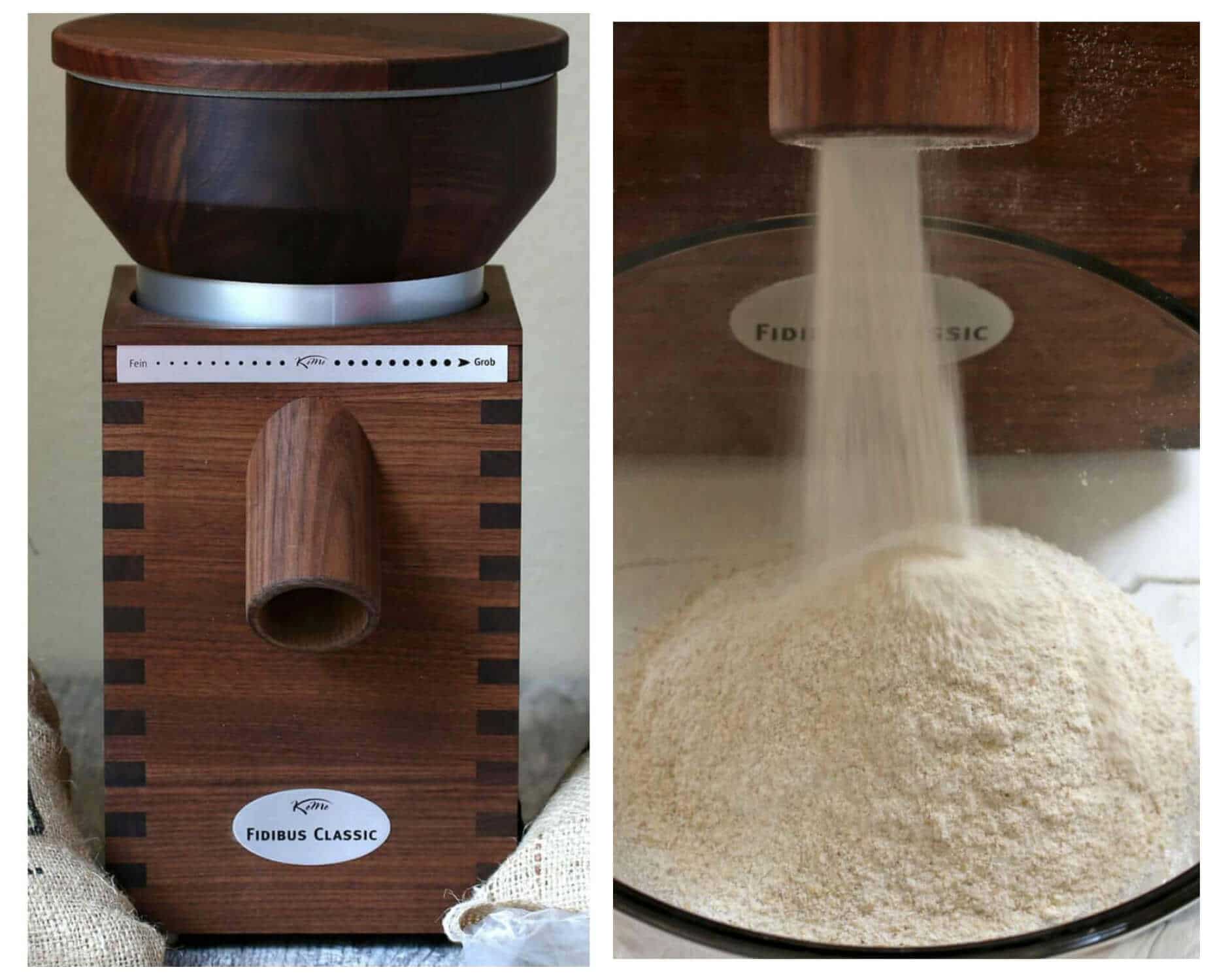
Check out my video below where I talk about some of the KoMo Classic Grain Mill’s features and show it in action in making today’s Danish Rye Bread!
Danish Rye Bread Recipe
Let’s get started!
If you’re grinding your own rye and wheat flour and cracking your own rye berries you’re in great shape! If you don’t have a grain mill you can easily find rye flour in grocery stores and you can “crack” the rye berries yourself by very briefly pulsing them in a good/powerful blender or food processor or smashing them in a bag with a meat mallet or other heavy object.
Combine all of the dry ingredients in a stand mixer bowl. Stir the yeast and sugar into the warm water and let sit for 10 minutes. Add all the wet ingredients to the dry ingredients.
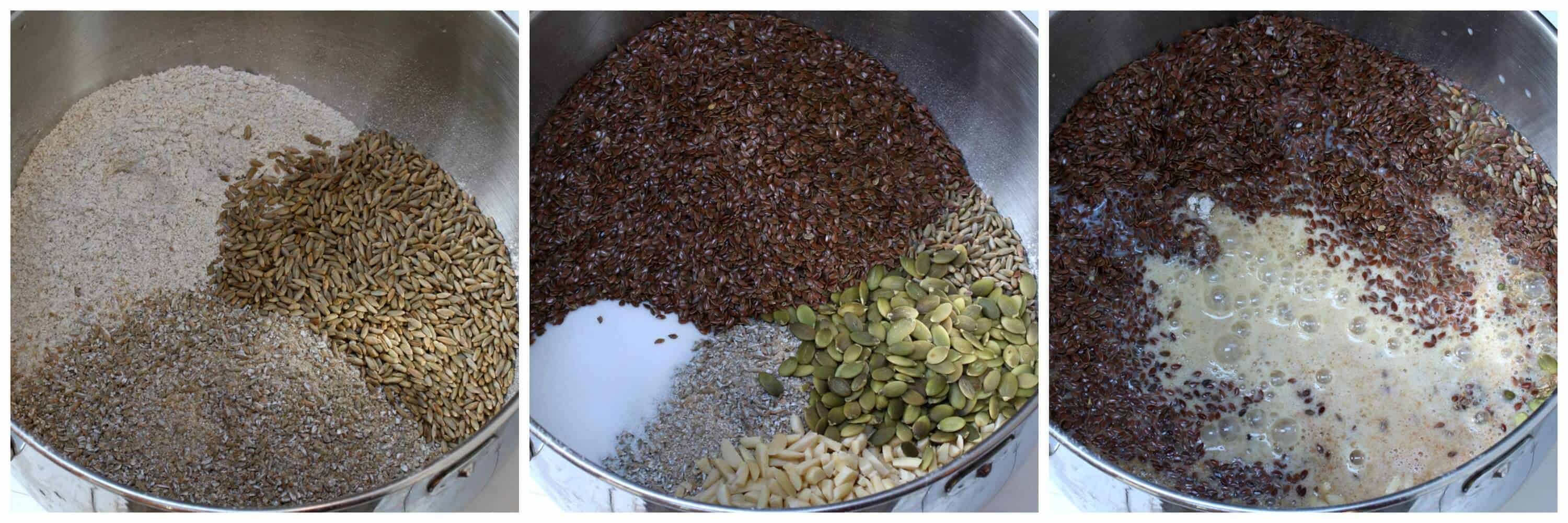
Give everything a stir manually to combine, then attach the dough hook on the stand mixer, set it to the bread setting (#2), and knead for 10 minutes. The dough will be very sticky, loose and not remotely malleable (ie, incapable of being shaped).
Scoop the dough into a very large non-metallic bowl. The dough will bubble up so use a very large, deep bowl with plenty of head room. Cover the dough loosely with plastic wrap and set it in a warm place (ie, room temperature) for 24-48 hours, depending on how sour you want the bread. I’ve done both with great results. If you’re only letting it ferment for 24 hours we recommend first soaking the whole rye berries overnight before using them (drain thoroughly).

After 24 hours the dough will be nice and bubbly with a very gooey texture.
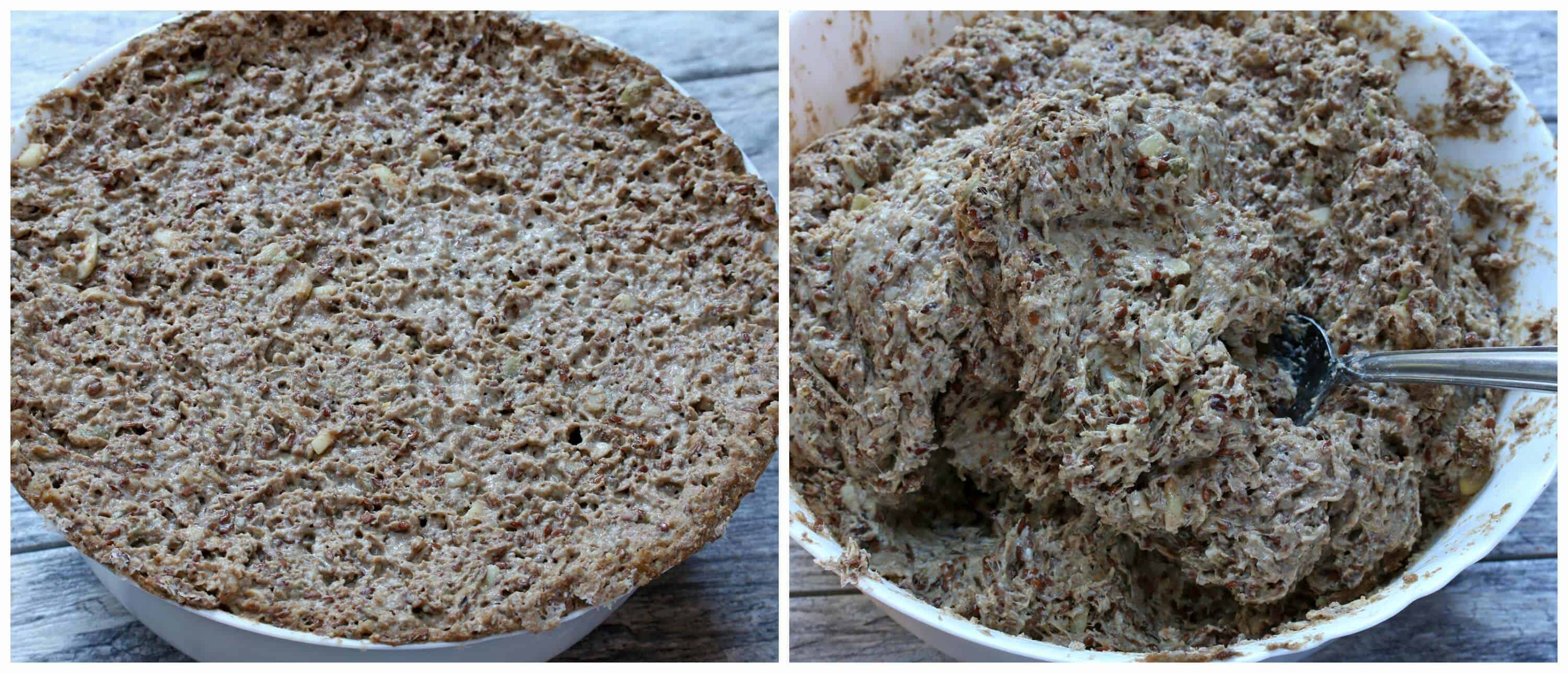
For sourdough it’s recommended that you line your loaf pans so the acid in the dough can’t react with the metal. I use and love the Parrish Magic Line bread pan made of heavy gauge aluminum with straight edges (made in the USA). It’s a 9 x 5 x 3 inch loaf pan.
Scoop all of the dough into the loaf pan, patting it down. It’s a lot of dough but it’ll fit in there, just pat it down (be sure you’re using a 9x5x3 loaf pan). Brush the top with some water and sprinkle some oats evenly over it.

Bake at 350 degrees F for 100-120 minutes or until the center is done. For best and most accurate results use an instant read thermometer and aim for an internal temperature of at least 210 degrees F.
Let it sit for 5 minutes before removing it from the pan. Let the bread cool completely before slicing it. Your rugbrod is ready!
To prolong its shelf life I recommend storing it in the refrigerator or freeze part of it if you know it will take you a while to go through it.
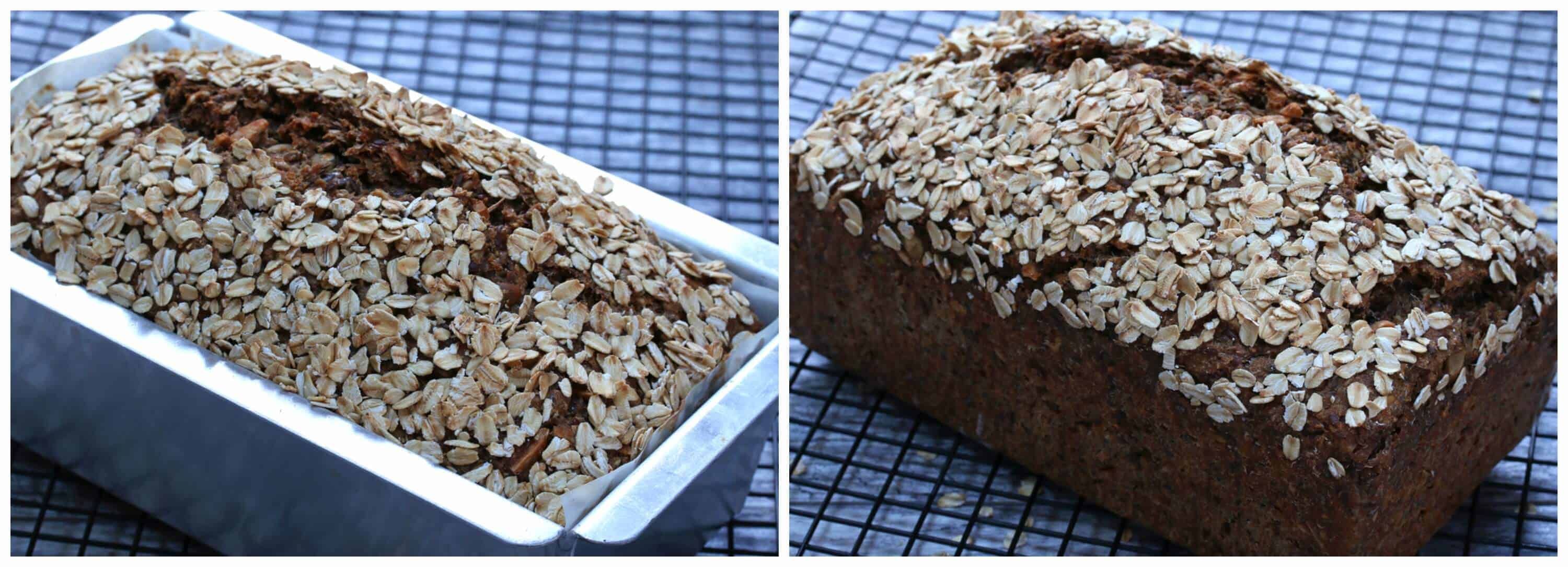
In order to get nice thin, clean slices that look like something you bought at a professional bakery, I recommend a slicer. Chef’s Choice Slicers are consistently ranked at the top and they get excellent reviews. I also use a slicer for meats and cheeses. Whenever I find chunks of cooked ham, turkey or cheese on sale I get those and slice them myself – it’s cheaper than buying them at the deli. At the very least you’ll need an excellent bread knife and for that my favorite knife, hands down, is the Cutco 9 3/4″ Slicer. It glides smoothly through bread and meat like no other.
Enjoy!
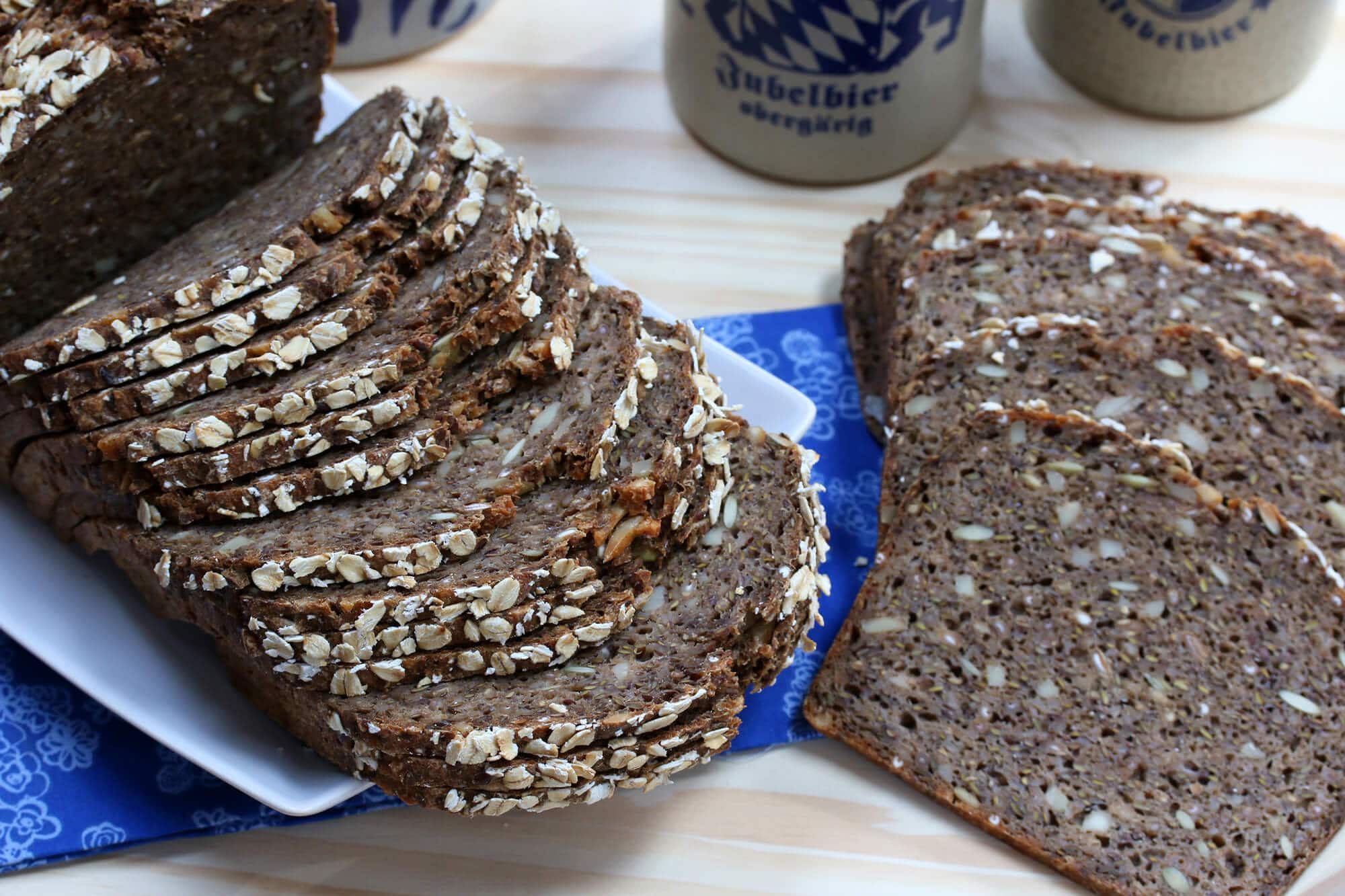
For more delicious breads from around the world be sure to try my:
- German Bread (Vollkornbrot)
- Lavash
- Injera
- Dosa
- Naan Bread
- Sourdough Naan
- Sourdough English Muffins
- Crumpets
- Olive Rosemary Focaccia
- Skillet Cornbread
Save This Recipe
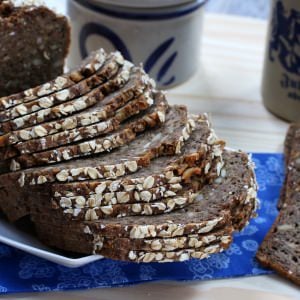
Danish Rye Bread (Rugbrød)
Ingredients
- 2 cups lukewarm water
- 2 teaspoons dry active yeast
- 2 tablespoons sugar
- 2 1/2 cups dark rye flour
- 3/4 cup all-purpose flour
- 1 3/4 cup cracked rye berries (very briefly pulse whole rye berries in a strong blender or food processor until they're broken up into coarse pieces OR smash them in a heavy duty bag with a meat mallet or other heavy object)
- 1/2 cup whole rye berries
- 1 1/4 cup whole flaxseeds
- 1 1/3 cup sunflower seeds or combination of sunflower seeds ,pumpkin seeds and/or chopped almonds
- 3 teaspoons salt
- 1 cup dark beer (see note)
- 1 cup buttermilk or kefir (vegan: 1 cup almond milk mixed with 2 tablespoons cider vinegar) (I often use homemade kefir in place of buttermilk)
- Traditional rolled oats for sprinkling
Instructions
- Stir the yeast and sugar into the lukewarm water and let sit for 10 minutes until the yeast is frothy.
- Combine all the dry ingredients in the bowl of a stand mixer. Add the yeast mixture, beer and buttermilk. Stir to combine.Fit the stand mixer with a dough hook and knead on the bread setting ("2") for 10 minutes. The dough will be very sticky, loose and not remotely malleable (ie, incapable of being shaped).Scoop the dough into a very large non-metallic bowl with plenty of head space (the dough will bubble up). Cover loosely with plastic wrap and let it rest in a warm place (room temperature) for 24-48 hours, depending on how sour you want the bread to be (be sure to ferment it for at least 24 hours to ensure enough of the liquid is absorbed). If you're only letting it ferment for 24 hours we recommend first soaking the whole rye berries overnight before using them (drain thoroughly).
- Line a 9x5x3 inch bread loaf pan with parchment paper (SEE NOTE). Preheat the oven to 350 degrees F.Scoop all of the dough into the lined bread pan, pressing down as needed. (It's a lot of dough but it will fit.) Brush the top with water and sprinkle over evenly with the rolled oats.Bake on the middle rack for 100-120 minutes or until the center is done. For best and most accurate results use an instant read thermometer and aim for an internal temperature of 210 degrees F.Let the loaf cool for 5 minutes before removing it from the pan. Let the loaf cool completely before slicing. Keep stored in an airtight container. To prolong its shelf life I recommend storing it in the refrigerator or freeze part of it if you know it will take you a while to go through it.
Notes
* You can substitute water or more buttermilk for the beer
Nutrition
Originally published on The Daring Gourmet January 28, 2016




















Do you have any suggestions for making this bread if I already have a rye sourdough starter?
Hello, I made this bread exactly to the recipe and cooked it for 120 minutes on 350F but the bread was still very mushy in the middle. I then put it back in the over for another 30-40 minutes and it was more cooked but still mushy. Do you have any recommendations on how to prevent this in the future?
Hi Alina, it sounds like there was too much liquid in the bread batter. Did you let the batter ferment for 48 hours? If you fermented it for 24 hours did you soak the grains first and very thoroughly drain them before adding them to the batter?
I did about 36 hours, but you’re right, I think the dough might have been too wet to start with. I will try again!! Thank you for your help :)
Hi, I am a Dane living in US some 25+ years. I now can no longer live without my rugbrød, and can’t wait to try this. What beer do you recommend (please be as specific as you can be!). I don’t ever recall thinking my bread tasted likw beer — so probably the less beer flavor for me the better (but especially because of medical issue, I love the benefits you point out when using beer, so would really want to). Thank you!
Hi Mike, I’m not remotely an expert on beer varieties I’m afraid, but for a mild flavor go with a “light” beer – avoid dark beers. You can forego the beer entirely though and the bread will still be excellent. I hope you enjoy this and please let us know what you think once you’ve had the chance to try it!
I’m low on All Purpose Flour. Can I substitute that out for whole wheat flour at the same measurement?
Hi Joe, you can use all purpose instead but not a 1:1 ratio as whole wheat flour is much denser. You’ll need to use more all purpose flour, probably around 25% more. Making substitutions like this will require some experimentation and you’ll need to eyeball the texture of the bread batter to determine whether it needs additional flour beyond that increase.
At last I tried again after nearly a year after my first attempts failed miserably. Now with a mill to crack the rye, that part was easier. Another poster’s advise to let the bread sit for a day really helps soften the crust.
End result was a successful, and delicious, loaf. Half a loaf, to be precise. I only make half the recipe. Baking time still approaches 3 hours and hitting only 202ish F.
One thing that I am curious about is the consistency of the dough immediately after mixing the ingredients, and as it is being put into the pan for baking. I wonder about the level of hydration.
I’ve baked your Vollkornbrot recipe at least every 2nd or 3rd week (love it!) since last year, but I still wonder about hydration levels and how to tell.
Any chance you could make a video of those two steps to show this? Sometimes the mix is fairly runny, but turns out fine after fermenting and baking. Other times it’s not as runny, yet still comes out well. So I really wonder about the ‘right’ level of hydration…
In any event, persistance pays off and the end result is a good rye bread.
Thank you!
Do you let this rise a second time in the pan?
Hi Monika, no you do not. This dough is too heavy to rise, instead it just ferments and then you bake it as soon as you put it in the bread pan.
Made this one time using only minor tweaks to the ingredients and it turned out great! Will definitely make again. Next time I might try two smaller loaves instead of one large loaf. Thanks for sharing this. Much easier and better than other recipes I have tried.
That’s fantastic, Matt, thanks so much!
Made this for my darling wife. She has been waxing lyrical about this type of bread she had as a teenager, prior my time. It had a brand name pointing to Switzerland and no recipe to be found. This was according to her near perfect, par the shape. Should have been a boule. 48 hours in relatively cool room temperature made a very sour bread, but she liked it!
Thank you! Shall bake again.
This is the second time I’ve made this bread. I used molasses instead of sugar and used Greek yogurt mixed half and half with whole milk for the buttermilk and beer as the taste of the beer didn’t appeal to me the first time baking this bread.
The taste is amazing. It had to bake the full two hours to get to the internal temperature.
My only question is how to soften the crust? Thank you for sharing the recipe!
Wonderful, Monica, thank you for the feedback! The crust is hard right after it’s baked but will soften once it’s sat a little while in a bread tin/container.
This recipe is my favorite! Easy to make and the results are fantastic. I grew up in Norway, so I love this type of bread. We are currently hosting a Danish student and I made some for her and she was so touched. The hardest part was finding the grains as our local Coop did not have them, but luckily on the internet I was able to find what I needed. Thank you for such a great recipe!
I’m so glad it’s been a success, Ingrid, thank you!